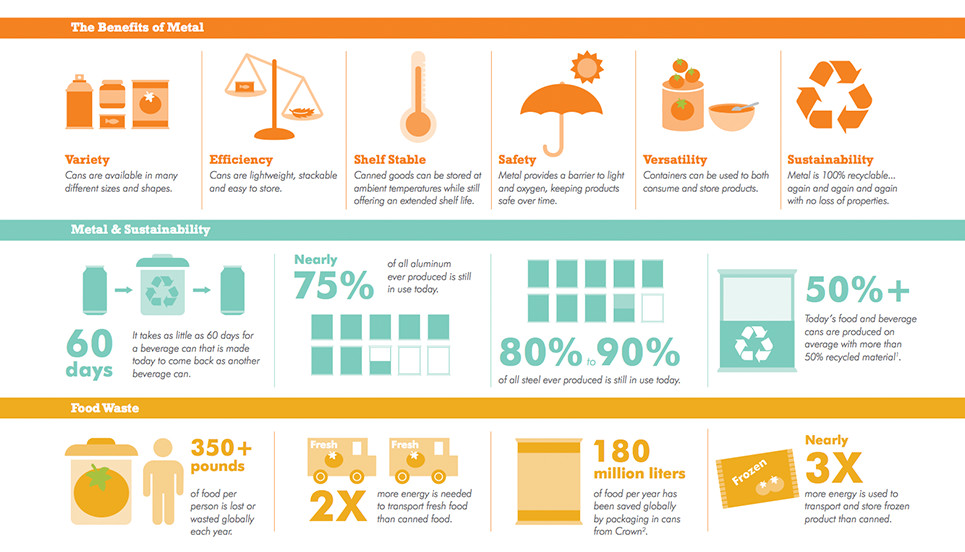360° Sustainability

Metal has long been viewed as a packaging format with exceptional sustainability credentials and its recycling is unique because it entails a true material-to-material loop. When steel or aluminum is produced, it stays in this loop forever with no loss of physical properties. Nearly 75 percent of primary aluminum and between 80 to 90 percent of all steel that have ever been produced are still in use today through recycling, according to the World Steel Association.
The loop not only helps reduce the use of raw metals, but also brings other benefits to all involved in the lifetime of the packaging. Here are a few examples:
Reduces Energy Use
Thanks to recycling, up to 70 percent of the energy required for primary production of steel cans is saved. The Aluminum Association estimates that the energy saved by recycling aluminum cans in the US is enough to power four million homes for a full year. Metal cans also save two to three times more energy when compared to fresh or frozen produce because they do not require refrigeration during transport or storage even after they reach consumers homes.
Reduces Food Waste
Metal, to an extent unmatched by any other packaging format keeps food fresh and safe for an extended period of time. Data from North America has extrapolated that metal packaging can globally save over a billion liters of food per year than if that same produce was packaged in alternative formats. Furthermore, foods in metal packaging are made safe for consumption over time through the retorting process. As a result, canned goods have an unrivaled food safety record.
Reduces Emissions
It has been estimated the steel recycling results in a 40 percent reduction of water use compared to new steel production, and it produces 76 percent fewer water pollutants. The impact on air quality us equally impressive, as recycling steel cans reduces greenhouse gases by 75 percent, and recycling aluminum cans reduces these gases by 95 percent. According to calculations, the steel food cans carbon footprint has been reduced by 30 percent since 2004.
Lowers Overall Costs
Sustainable practices sometimes face skeptics because of perceived high costs. The Aluminum Association estimates that aluminum scrap is worth $1,491 per ton, which compares to $385 per ton for plastic. In addition, for years metal packaging consumers have benefits from getting money back on each can they return to recycling.
To learn more about Crown’s 360° Sustainability of Metal initiatives, download our 2015 Sustainability Report.
